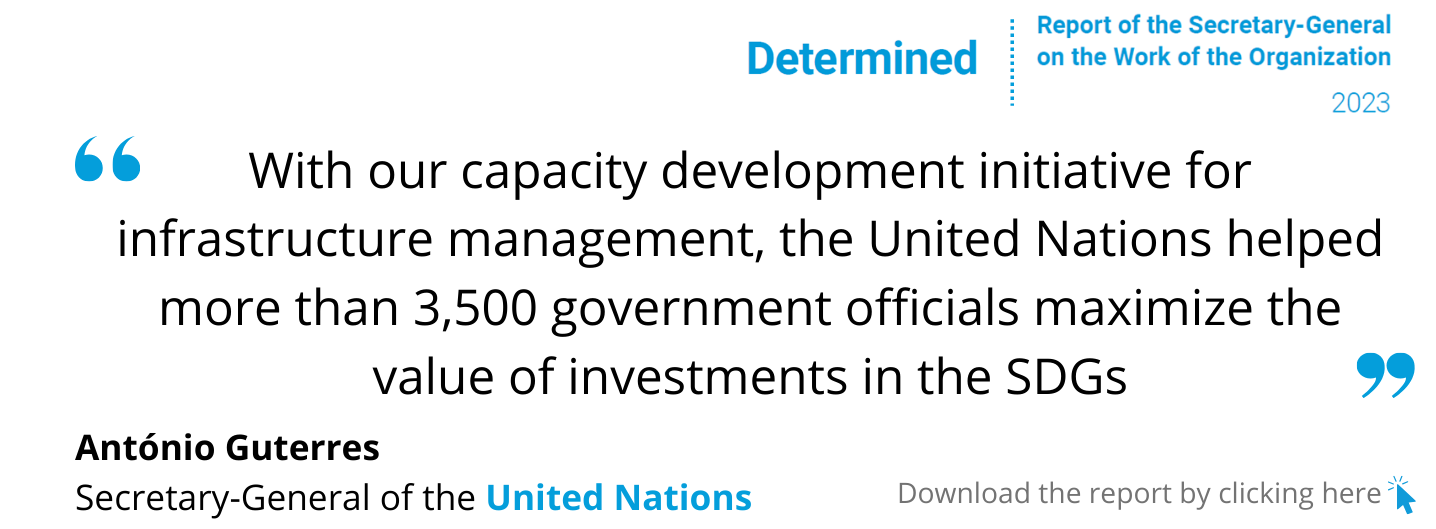Access all our contents in the following languages:
| Spanish | French | Arabic | Russian | Chinese |
|---|

Resilient, inclusive, and sustainable infrastructure has an impact on the achievement of over 90% of the SDGs and their targets. The Infrastructure Asset Management (IAM) team at UN DESA, together with UNCDF, UNOPS and a growing global team of experts, are implementing a comprehensive programme of capacity development activities for local and central governments across the globe. The goal is to maximize the service value of public infrastructure investments and leverage them to finance sustainable development for generations to come. Project activities are currently funded by the UN Peace and Development Fund and the UN’s Regular Programme of Technical Cooperation.

The major reference point for the IAM capacity development programme is the UN publication Managing Infrastructure Assets for Sustainable Development - A Handbook for Local and National Governments. The Handbook lays out a set of concrete tools and insightful lessons for countries and cities from any region to digest and apply to their unique local contexts. The handbook is available in all 6 UN languages and several other local languages.
For more information, please contact us.
- Background
-
Infrastructure is the backbone of economic growth and development. It is estimated that realization of over 90 percent of the sustainable development goals is directly or indirectly pegged to infrastructure. This means that unless significant investments in infrastructure are made, achievement of the Sustainable Development Goals (SDGs) by 2030 is highly unlikely. In many developing countries, the quality of infrastructure, especially transport, energy and communication is below par. Governments have fallen short in allocating public resources towards capital-intensive infrastructure projects, including resources needed to sustainably manage existing infrastructure assets over their entire lifespan. Investment needs have grown further, as COVID-19 not only reversed years of progress on the SDGs, but also revealed critical infrastructure gaps, for example in healthcare and digital connectivity.
Infrastructure asset management can improve the capacity of local and national governments to undertake sustainable, inclusive development. IAM entails a systematic approach to managing assets – over entire life cycles and within a broader asset portfolio. It ensures that initial public investments in infrastructure are not wasted and that they adequately serve communities for generations to come. The growing number of risks and challenges stemming from climate change, public health crises and advances in digital technology make the case for effective asset management as compelling as ever. Effective asset management helps "make cities and human settlements inclusive, safe, resilient and sustainable" – Goal 11 of the 2030 Agenda for Sustainable Development. It is also key to building capacity at local level across the globe for SDG financing, as called for in the Addis Ababa Action Agenda.









